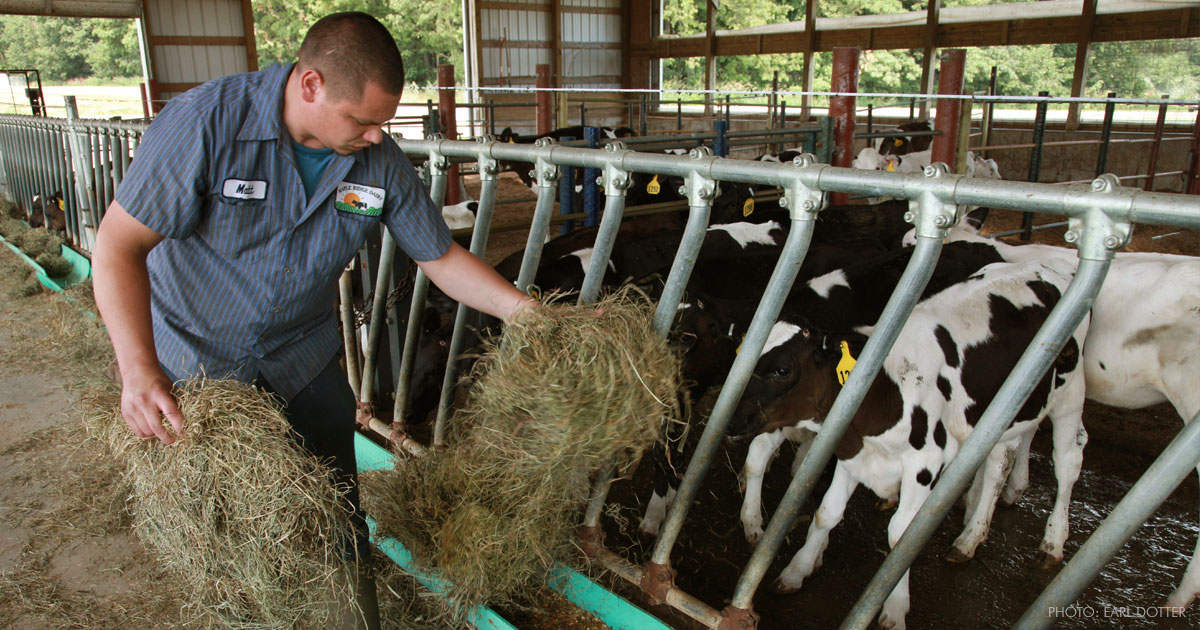Seguridad: How to Stay Safe on the Dairy Farm

Imagine you just got a new job. Congratulations! You now work on a dairy farm with hundreds, possibly several thousand 1,500-pound Holstein cows -- but you have never worked with large animals before. You and your boss speak different languages; maybe you understand a lot of what your boss says, but you aren’t fluent in English. Your boss shows you how to do the basic tasks your new job requires -- getting the cows into the milking parlor, milking the cows -- but you are not trained on how to stay safe while operating the equipment and machinery you use, or how to handle a cow, or what to do and who to call in the case of an injury.
Roughly half of all dairy workers in the US are immigrants, many of who have never worked on dairy farms before, and yet few get the health and safety training they need. In a new paper published in Health Promotion Practice, MCN’s Amy Liebman and co-authors highlight a successful worker health and safety training curriculum that was developed as part of the Seguridad en las lecherías project. The authors found that 67 percent of dairy workers who participated in the Seguridad project received no health and safety training at their work prior to this project. Not surprisingly, the researchers found that 26 percent of workers trained reported being injured on the job. Seguridad developed an OSHA-approved five-module, bilingual health and safety train-the-trainer curriculum that has educated over 850 workers on 67 farms so far.
“Quantitative and qualitative evaluation of the trainings suggest that our curriculum successfully increased worker knowledge and promoted contemplation of safe practices,” the researchers concluded in the paper, adding that the overall knowledge gain of 25 percent was statistically significant. After the provided training, the participating dairy workers stated they felt they were better equipped to do their jobs safely.
“Offering health and safety training to workers is an important component to creating a safe workplace and many of the producers with whom we worked welcomed resources aimed at their immigrant workers as there is simply a dearth of linguistically and culturally appropriate health and safety materials for immigrants employed on US dairy farms,” said Liebman. The research comes after five years of work on Seguridad en las lecherías, created by Migrant Clinicians Network and the National Farm Medicine Center, and supported by the Upper Midwest Agricultural Safety and Health Center, a NIOSH-funded center. Earlier this year, UMASH developed a video about Seguridad, featuring the voices of dairy workers, farm owners, and researchers. View the video to learn more about the project at http://umash.umn.edu/seguridad/. All of the Seguridad materials like the train-the-trainer curriculum are available free of charge for download on MCN’s Seguridad page at http://www.migrantclinician.org/seguridad. And you can access or share the new article at https://doi.org/10.1177/1524839916683668.
Like what you see? Amplify our collective voice with a contribution.
Got some good news to share? Send it to us via email, on Facebook, or on Twitter.
Return to the main blog page or sign up for blog updates here.
- Log in to post comments
